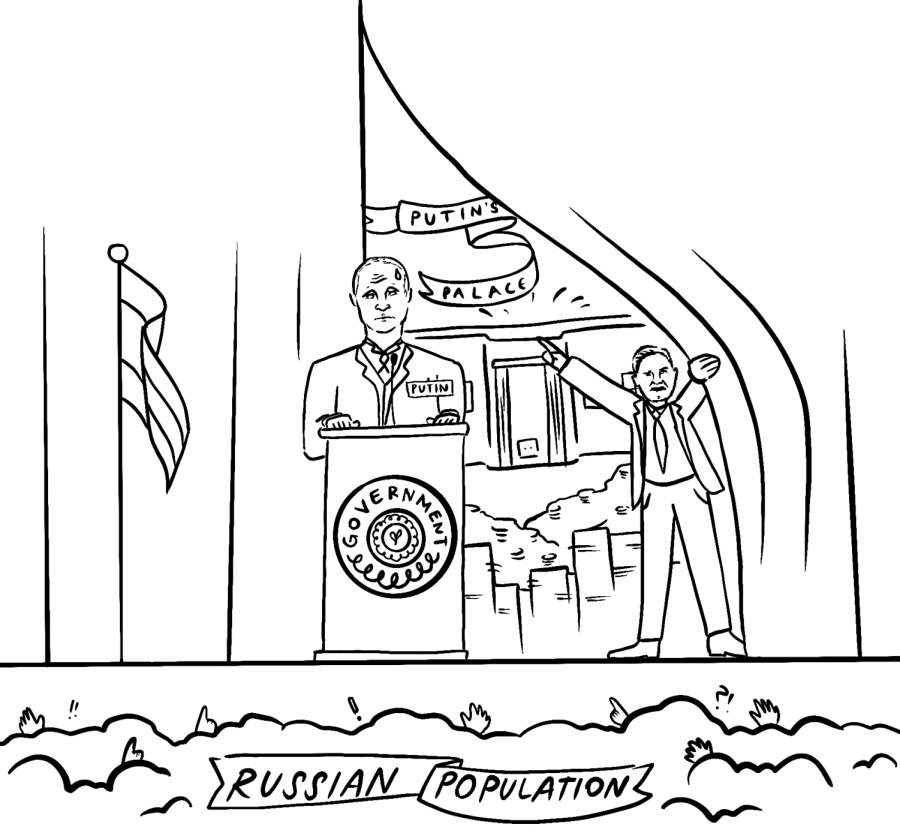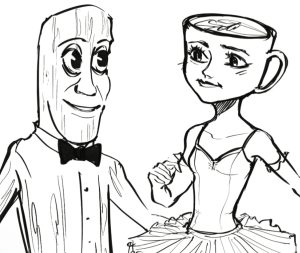The Tsar’s Palace: Putin, Navalny, and the Russian Protests
February 26, 2021
“This isn’t a demonstration of strength—it’s a show of weakness. You can’t lock up millions and hundreds of thousands of people.” These were the words of Russian opposition leader Alexei Navalny during his trial in Moscow on February 2nd, 2021. Many observers saw this proceeding as reminiscent of a Soviet-era show trial in which the verdict was known before the trial began. Found guilty of violating his parole, Navalny was sentenced to two years and eight months.
As the founder of the Anti-Corruption Foundation, Navalny has worked for years as an anti-Putin activist opposing the oligarchic structure of the Russian state. Rapidly rising in popularity throughout the 2010s, this nationalist-turned-liberal has become the foremost leader of the Russian opposition. Navalny has released multiple investigations on state corruption and embezzlement, as well as engaged in Russia’s limited political process to spread awareness of what he sees as dangerous impediments to democracy, such as a judiciary almost completely under the thumb of the Kremlin. These actions have made Navalny a political enemy of President Vladimir Putin and the ruling “United Russia” party.
According to the Kremlin, Navalny was tried for violation of the terms of his parole stemming from a guilty verdict on fraud charges dating back to 2014. These terms required him to meet with a parole officer at least twice a month—meetings that he was unable to attend as he was in Germany recovering from his poisoning last August, an apparent assasination attempt by Russia’s Federal Security Bureau (FSB). Upon returning to Russia from his treatment in Germany on January 17th, Navalny was arrested and placed in detention. He claimed at his trial that the charges against him were absurd, and that the trial itself was ordered by President Putin to silence him and put “one person behind bars to scare millions.” According to international observers, activists, and officials, this was almost certainly the case.
However, Navalny anticipated Putin’s intentions: he had instructed his team to release a two hour investigative documentary detailing the corruption of the Putin regime following his inevitable arrest. The investigative documentary, titled Putin’s Palace. History of World’s Largest Bribe, received 100 million views on YouTube in only nine days. In this documentary, Navalny alleges that Putin is the de-facto owner of a 30 square mile estate on the Black Sea coast containing a personal palace, an indoor hockey rink, two vineyards, multiple expensive peripheral buildings, and a fortified fence, and all covered by a no-fly zone. The existence of “Putin’s Palace” has been known to anti-corruption activists for years—but to few others—and the details of the property were until now mostly unknown. In the documentary, Navalny references a detailed floor plan that he allegedly received from an anonymous contractor who worked on the estate, details from insiders who participated in the project, and a number of leaked photographs of the central “palace.” According to these sources, the property includes expensive Italian furniture, tasting rooms, a private casino, a theater, a gold-plated suite, and even a private hookah bar with an elevated platform “with a pole on the stage.”This grandiose palace is covered top to bottom with variations of the Russian double-headed eagle emblem, long a symbol of the Russian monarchy.
The total price of the estate is an estimated $1.4 billion, in a country where the average monthly salary is $800. According to Navalny, Putin received the funds for his palace through a complex corruption scheme involving multiple large bribes from several of Russia’s notorious oligarchs and businessmen, as well as embezzlement and unethical financial practices. Navalny goes on to conclude that as long as Putin is in power, oligarchs and politicians will continue to steal from the Russian people, and that the only solution is to replace the current regime with a new democratic government.
The popularity and damning conclusions of this documentary added even more fuel to the fire. The purpose of Navalny’s return to Russia, his willingness to risk arrest, and his investigative documentary was to spread awareness of the alleged corruption and authoritarianism of the current regime. This is exactly what happened. The events of the week culminated in mass protests across the country starting on January 23rd. Tens of thousands of people began assembling daily in cities throughout Russia. They were protesting not only the corruption exposed by Navalny’s documentary, but also his arrest and sentencing for the crime of not reporting to his parole officer while he was in a coma after his poisoning. The government reacted by suppressing the protests with sometimes brutal violence and mass arrests. As of February 11th, over 11,000 protestors and bystanders have been detained by law enforcement. Two of those detained were Alexei Navalny’s wife, Yulia, and his brother, Oleg. The suppression of protestors has been internationally condemned and the European Union is currently preparing a proposal to impose sanctions on the Russian government and prominent officials.
It is unlikely that these protests will remove Putin from power—but that was not Navalny’s immediate intention. The intentions of his actions and the resulting protests were to expose and repudiate the misdeeds of state officials and the oligarchs that they serve. In this way, the protests have been wildly successful. A significant portion of the Russian population has seen the events unfolding throughout the country and can no longer claim ignorance. While it is unrealistic to expect this awareness to quickly lead to political or regime change, “Putin’s Palace” and Navalny’s arrest have released the genie from the bottle with stark examples of gross corruption and authoritarianism that many Russians find appalling. This may prove to be a turning point in Russia’s twenty year infatuation with Vladimir Putin.










